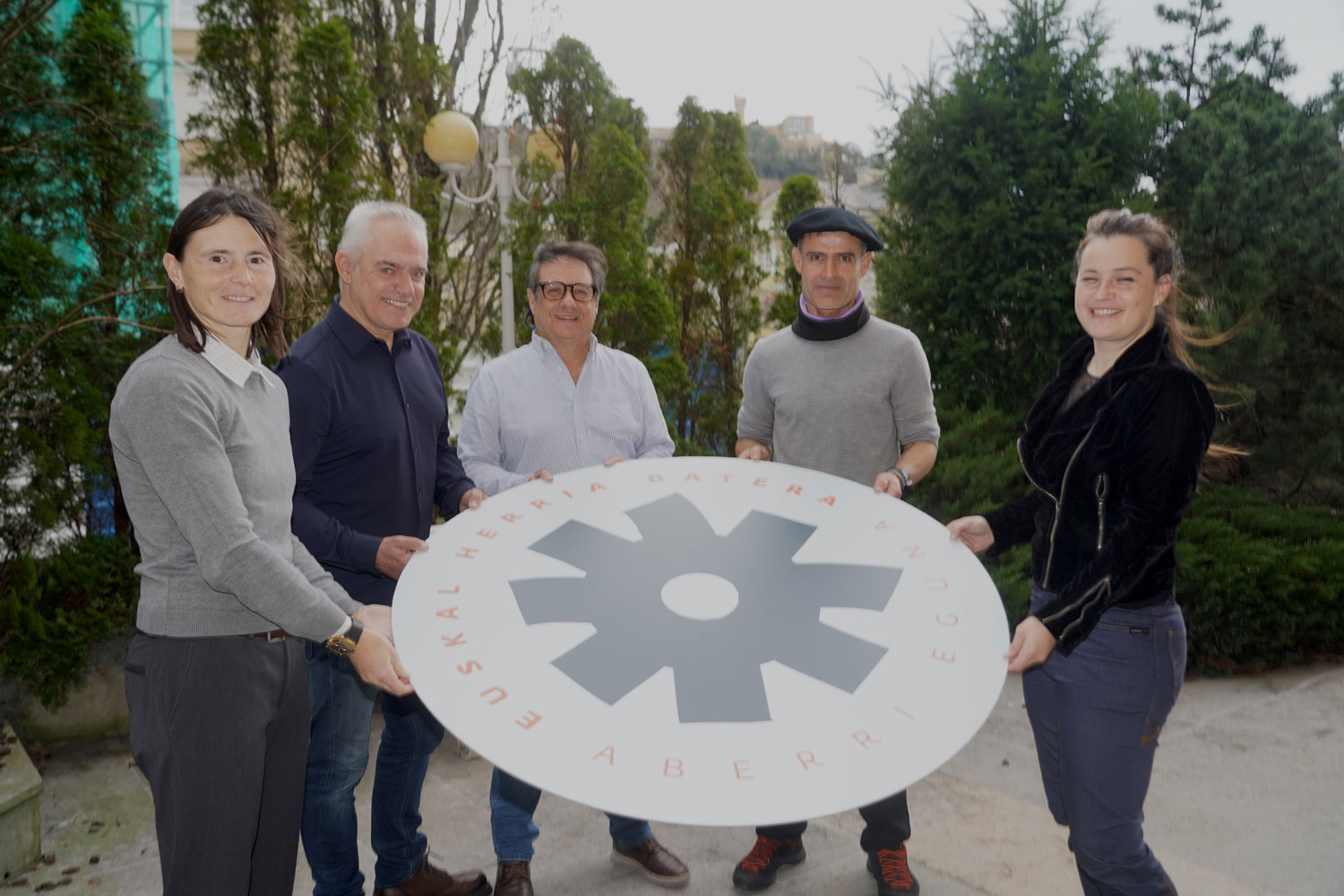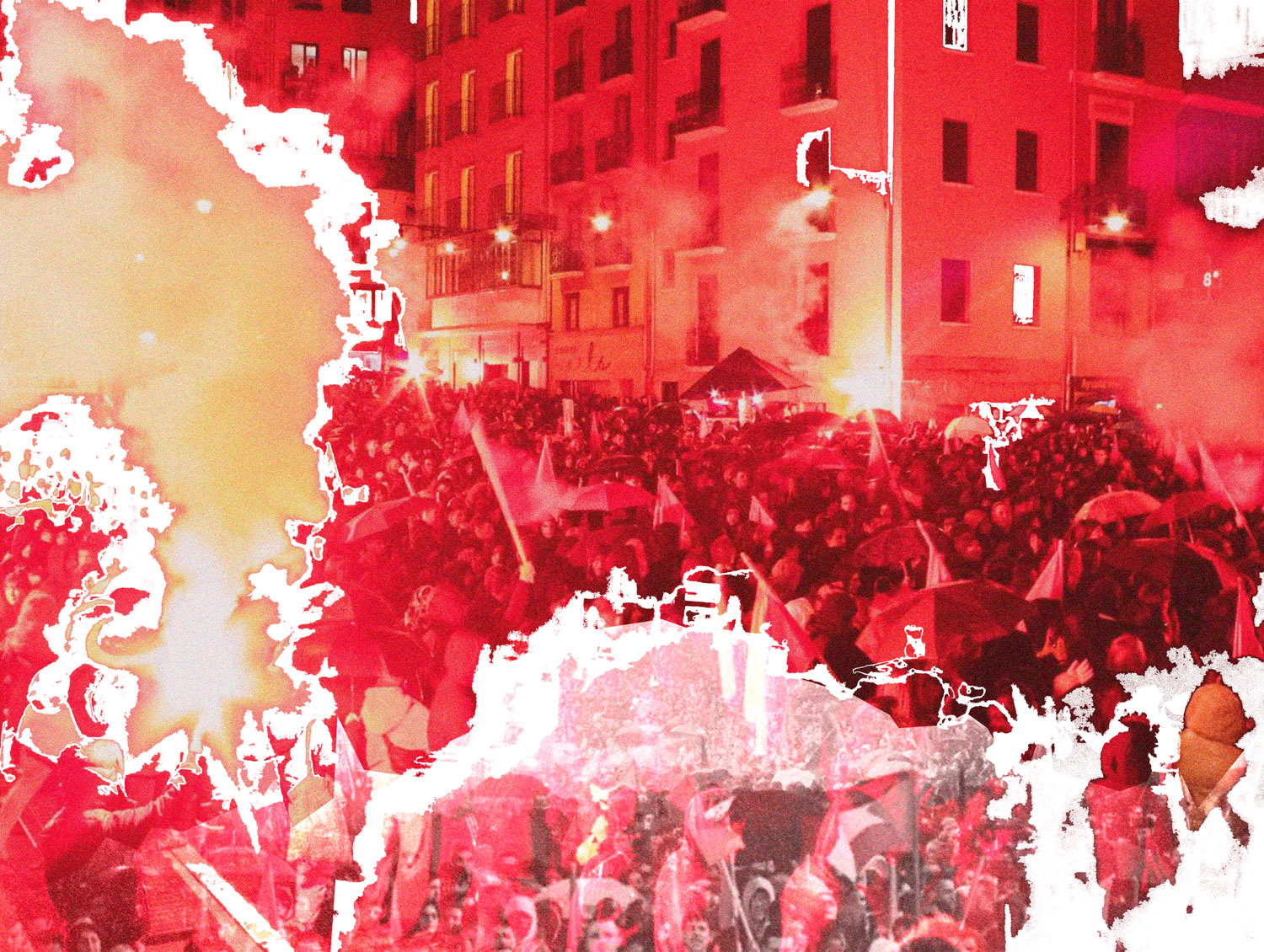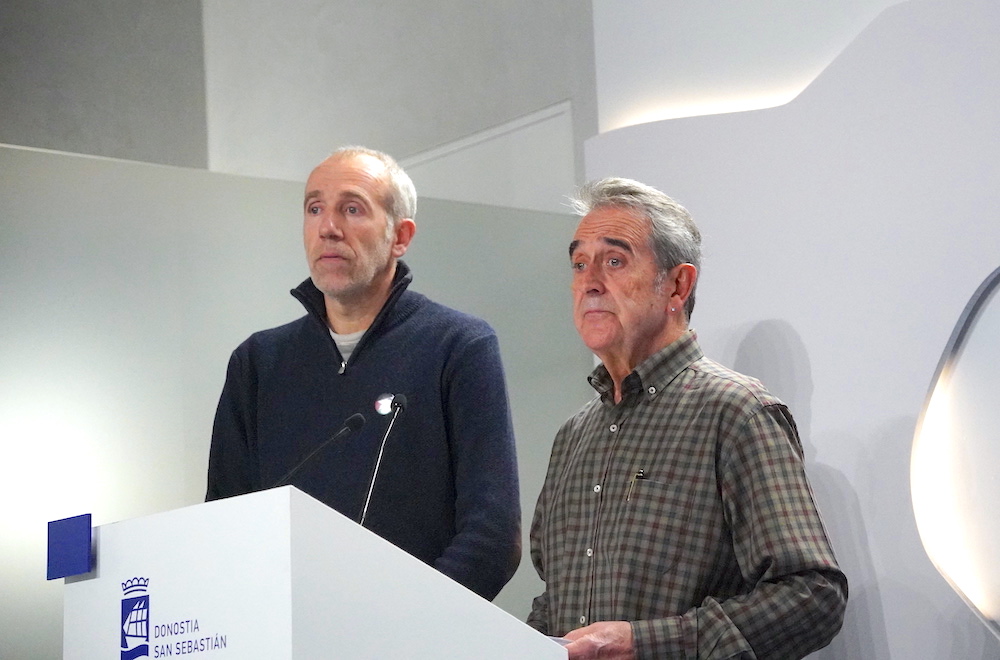How do we face the most powerful in the world?
- The French Government has militarised Lapurdi on the occasion of the visit of the authorities of the "seven most developed countries in the world". After a year of work, citizens who have wanted to deal with the most crude capitalism have organised a counter-peak. It has not been easy in the midst of thousands of policemen. ARGIA has been in the Plaza de la Virgen Blanca these days to tell the joys, the sadness, the impotence, the perseverance, the tensions and the gestures of solidarity.

Wednesday, 21 August at 10 a.m. The conferences have begun in Ficoba de Irun, the first fabrics houses are being built in the Urruña camp and from the outside it is approaching the area of the Bidasoa people dissatisfied with the summit. The counter-summit organized by the G7 EZ platforms of the Basque Country and Alternatives G7 of the French State begins. But even though the controversy officially starts today, a lot of things have happened before, and that background is important in understanding what's going to happen throughout the week.
Auzolana vs Auzolana
Auzolan has become a concept that almost everyone uses for almost everything – “Euskadi, Auzolana”, says the motto of the Basque Government. The capitalist auzolan they have made to materialise the G7 summit is not a contempt: The entire administration of the French State in its organisation; the public and private media giving a push to the quotation; the regional governments of the South offering many resources in the field of police and mobility; the mayors of Biarritz and the surrounding areas pressing and persuading traders not to close their business – if they do not win by guaranteeing subsidies from the State –; more than 20,000 CRS, BAC, police, military of Spain.
At the same time, another great popular auzolan has been making its way: “We started working from Ipar Euskal Herria a year ago. In September we gave it a national character, with the agents of the South. A new platform was created in Paris. We have put the joint work in place and by the end we have managed to work almost as a single platform. That’s already a victory,” said Itziar Fernández and Eñaut Aramendi, two of the spokesmen for the G7 EZ counterclockwork platform.
In the arguments against the G7, it has been easy to build consensus among the 85 unions, political parties and popular movements that are part of the platforms. Also, to define a global counter-summit model, differentiating two moments: the constructive line between 21 and 23 August, which aims to make visible alternatives; and the line of opposition between 24 and 26, which is based on protests and mobilizations. Making Euskal Herria visible, her realities and demands were important for the members of the G7 EZ platform.

But the road has not been without difficulty. One of the sources of tension: issues to be addressed. “There are many agents and everyone wants yours to be, but there is no room for everything,” says Aramendi, while praising the synthesis exercise that the programming team has carried out. Another major source of tension, probably the most important, is the classic in contrasts: the struggle modes and their complementarity.
Two opposing auzolans, with curd and skin. Not two completely different worlds, unfortunately: the sexual assaults denounced during the preparation of the counter-peak, has recalled that what is fought is not only often outside, but also inside.
Fear vs conviction
Crossing the border and walking through the streets was going to be very difficult, fundamental rights were going to be suspended, Biarritz and the surrounding area are going to be militarised, serious disturbances were foreseen – giving the “foreign anti-systems” the role of “evil” that the Basques have so often played. The sponsors of the G7 have opened panic to the first day of the European League. It seems that it has been a communicative strategy to curb critical citizens, as reality has not been so raw.
Members of the G7 EZ platform have made a special effort in recent weeks to deactivate them. The cheerful and constructive nature of the proceedings has been a constant way of ensuring that citizens have no incidents on specific days and that the possible moments of tension have been limited to the disobedient initiative of Sunday. They have attracted at least thousands of people.
Building alternatives
From Wednesday to Friday, the counter-peak has focused on the need to visualize and build alternatives in many spaces. According to the organizers, over 6,000 people have visited the campsite between Ona Urruña, Hendaia and Irun. Over 100 workshops and conferences, meals, exhibitions, concerts, dances, poets, small and big conspiracies, assemblies, the offer has been very varied. Some of the initiatives have been decided at the same time, for example, on Thursday morning a demonstration has come a long way from the camp to the port of Kaneta in Hendaya, and on the night of that same day a non-mixed feminist demonstration has brought together Ficoba and Kaneta, condemning the sexist aggression suffered.
.jpg)
Ficoba and Les Variétés films have been the place where more conferences have been held, divided into seven main lines: capitalism, environment, feminism, peoples, democracy, imperialism and migration. The traditional popular movements fair and political agents have been held in the dining room, and the tent of EH Bildu, the most prominent among all, has given much to talk to the attendees. From time to time, the exhibition has become a tingling, in many of the conferences many people have been left out. The mix of people and space has generated a curious contrast: the predominance of people linked to popular construction has given the space a popular character, while the formal of the building, along with various ways of doing, has given the space an institutionalized tone. The Basques have been the majority in Ficoba and in the corridors a lot of Basque has been heard.
At midnight on Thursday, numerous gaztetxes from Uztaritze (Iparralde) have organized a "wild concert" under the stars to avoid the dream of the military who have fallen asleep in the liceo, and have spread songs like "Policia no" from the RIP group.
The camp is a different space. For some, above all, it has done the function of bedroom and the day has developed in the rest of the areas. However, for many it has been a comprehensive accommodation. Meals have been held there, public talks and initiatives have been organized, meetings have been held in silence, or parties have been extended. The atmosphere is more alien, more French. Jaka Hori, anarchists, medical and legal teams, among others, have spent most of the time there. In total, some 2,000 people have slept in the place where Nestlé’s workers came on holiday.

One of the sensations that many of the participants mentioned is that the spaces of Ficoba and the camp were a little far away from each other and that some have spent three days behind them. In Hendaya, the Free Intergalactic Meetings Center and the school have had a smaller dimension than the rest of the spaces. In these two spaces, the mix of people from one space and another has been greater. The meetings have been built between the occupied space of Notre-Dame-des-Landes and the Amankomunkomunkomuneak network in Brittany, mixing the formal and informal: talks and workshops, singing and rope dance poets, music, meals; and in a quiet bar atmosphere, material of many collectives. The atmosphere has been very nice, with some times of people approaching the end.
Workshops have been organized in the school and the Gazte Gunea has also participated. Here too, the influx of people has been constant. One of the joys highlighted by the organizers of this space has been the exchange between young people from Euskal Herria and abroad, which has served to feed each other.
Disobedience and violence
The differences and tensions around the modes of fighting have been made in the antechamber. Within the G7 EZ platform it has long been agreed to call for disobedience initiatives against the summit of the authorities, within the framework of non-violence. But when it comes to defining this, different problems and points of view have become apparent. How far to go, in what way, for what purpose; the sense of disobedience; whether to negotiate or not with the prefect; to what extent to approve or overcome the prohibitions and limits established; to what extent it is intended to keep all protests under control. In the early days of the counter-summit, some of these discussions have still been open among the organisers.
The platform’s agents had already agreed that they would not use the methods of violent struggle against violence. If someone used it, G7 EZ wouldn’t value it, but let him understand that they were foreign to the initiatives organized by the platform. Some groups and people who support the use of violence seem to have admitted it, but others do not, and the tension has been noticed in the days of the counter-summit. In the camp, for example, many people were painted against "pacifism", while on Saturday's demonstration in Hendaia banks guarded posters and ATMs with banners to protect them from possible attacks. Different points of view and forms of the struggle, almost extreme in some cases, within the same counter-peak. The presence of volunteers before the banks by the organizers of the counter-summit against the G7 has caused discomfort in some sectors, as seen on social networks.
The demonstration, which started on Friday afternoon from the camp, has highlighted these extreme points. “Welcome to paradise” says the black banner that carries 200 people between the houses of Urruña and that go directly to cut off the highway.
.jpg)
There have been some incidents along the way when they have met with the police. Several tear gas and rubber bullets have been fired in the vicinity of the camp, leaving at least 17 detainees. The incident has visibly hit the camp, where hundreds of people who were calm have responded to stones by seeing police vans rise to impede access to the interior. The rest area has become a defensive zone, as shown by several barricades built on the entrance road. The following day, protesters have published an article entitled “The Counterman Does Not Monopolize”, denouncing “the authoritarian character and blocking of a strong sector of the platform. (…) The opponents do not understand it with hegemony; many struggles of the world come together in Iparralde these days to get to know, build, destroy and bring to reality that new world that we carry in our hearts from utopia to reality. All avenues are legitimate against the G7 and its world,” they stressed.
Actions in different ways
But at the end of the weekend the tensions between the different forms of struggle that have been put on the table have not turned upside down the demonstration on Saturday morning, which has travelled the way from Hendaia to Irun calmly and “non-violent method”, as decided. More than 15,000 people from different areas and social agents have participated in the event, according to the organizers of the march. The flags and symbols that individuals carry demonstrate that people have joined the mobilization for different reasons. Missing a color: black block black. They have come to the call that is called for in the afternoon in Baiona from the first hour of the morning.

The dark shades have dominated the mobilization of Saturday afternoon in Baiona, even though the convoys have been the Yellow Jackets. The demonstration has been less widespread than in the early morning, as extreme police control mechanisms have made access to the city centre completely difficult. If what happened to the ARGIA journalists serves to illustrate the situation, before arriving by car to Baiona, the countryman police in the car park have registered cars and backpacks; then, we have stopped again on the road to Baiona Ttipi and have held us for 40 minutes, taking away protective material – helmets and gas protection glasses – indicating that at the end of the demonstrations we are recommending to “go away”. Numerous journalists have denounced during these days that the authorities have violated the right to information (I, II, III, IV, V, VI, VII). The people who have passed the police controls, on the other hand, have been closed in Baiona Ttipia, prohibiting the exit from the area "until everything ends", such as cutting the bridges over Errobi with fences. The demonstrators have not prevented confrontation with the cops who have been confronted in all the exits of the people, and the police have used the water gun, rubber bullets and gas boats from the very beginning. At the height of the disturbances, the police have also launched a GLIF4 grenade composed of 30 grams of TNT, as documented.

There have also been those who have opted for civil disobedience. In the same Baiona Ttipia, on Sundays morning, Alternatiba, ANV-COP21 and Bizi! The March of the Potretas, which has gathered 900 people, according to the organizers, has been convened by the movements. To denounce that Macron does not take effective action in the face of climate change, they have shown portraits of the ruined president of 128 houses in the French state and of Irisarri retired shortly before the start of the summit, with applause from the attendees. People have taken pictures of the house covered to make it difficult for the police to identify which ones were truthful, and once shown, they've rehid them. Faced with the ban on demonstrating in Baiona, the police have decided not to take their hands and, under the chairmanship of the honorary president of Attac, the writer Susan George, have offered a press conference: “That the photos are here means, Macron, that you are in the hands of the citizens. After this nonviolent action, the photos will return to their places. Mr President, if you do not resist the climate emergency, you and your G7 friends will commit a crime,” he said to dozens of media around the world.
Militarized zone
The number of police officers has plunged Lapurdi into a state of siege and the presence of armed forces in all corners has made it extremely difficult for its inhabitants, be they neighbours, demonstrators or organisers. Before Monday morning, the authorities cite 83 detainees - all of them non-demonstrators, many of whom are detained in roadside checks. ARGIA has witnessed the arrest of a person in the face of the facts, and many of them have been expelled from the country after being detained for between 24 and 48 hours.
The G7 EZ platform has also made last-minute changes to the planned actions, noting that in this state of siege it is impossible to guarantee people’s safety: on Sunday at noon the “Arco Iris” protest was changed against the ban on demonstrating in seven roundabouts and a popular wall was called in a Angelu square at the last hour. In this regard, the arrest of Joseba Álvarez, one of the organizers of the counter-summit, has had a wide impact. A few hours into the morning, after the police had been confronted in the immediate vicinity of the Urruña camp, he was informed that he was driving from Biarritz to the camp and was unable to enter the French State, although he had previously been in contact with the institutions. The next noon he was released in Behobia, as were many other detainees. Once this is known, the platform decided this Sunday morning to suspend the action of the popular wall, causing the frustration of many people who wanted to participate in disobedient initiatives. Despite the suspension of the program's activities, Eñaut Aramendi, spokesman for the G7EZ platform, spoke with words of victory: “6,000 people, 100 conferences, 15,000 demonstrators; we can already say that we have won our counter-summit”.

Despite the obstacles, these Jakas have reaffirmed themselves and, above and beyond the police presence, have made a new appeal this Sunday at noon in Bidar. Police vans are as numerous as protesters: a disproportionate operation in relation to the size of the action has forced the citizens to be held almost two hours before anything starts. Journalists who have come to inform us of what is happening have also had constant difficulties in doing the work, have identified us, registered us and held us together with the citizens. Two Amnesty International inspectors have also been arrested and detained by the police.
Here, @amaialekunberri, @larbelaitz eta Eneritz (@argia), we will try to do our work and wait for the police to release us. #G7Biarritz pic.twitter.com/6PVv2nvLdj
— Hibai Arbide Aza · (@Hibai_) August 25, 2019
On Sunday afternoon, tiredness among activists who have come to the protest is evident: In Hendaia, at 16:00, in an improvised demonstration, hundreds of people have concentrated in front of the Police Station; at 17:00, where the mobilisation called for in Baiona was to take place, many police, journalists and curious people have gathered. The conditions for taking action against the G7 are already signs that they are running out.
The leaders of the G7 have gone as they have come. They will congratulate the French Interior Minister and the security departments of the two countries on holding a three-day meeting at a cost of EUR 36 million, according to the French Government spokesman. The thousands of police officers who have been transferred to Euskal Herria will return to their villages, and this people will return to normal. As in recent years, to remain the area with the most police per person in Europe.
Lehen itzulitik bigarrenera, auzapezgotzara jauzi egin zuen Ramuntxo Labat-Aramendi abertzalearen zerrendak. Erdiespena "xinaurri lanari esker" egin zela uste du Labat-Aramendik. Ahetzen zerrendak bozen %44,39 lortu zuen urtarrilaren 12an eginiko behin betiko bozketan... [+]
I received your e-mail in personal mail on the strike portals. At first, like many others, I thought it was to let you know what options we have in the face of the strike. But no, the e-mail received was a political and communicative movement against the strike.
I will confess... [+]
“It happened once and since then it happens every day [...] let’s not see what happens here. Such is the world, and no one today is a prophet in his dominion.”
I’ve been told about something else since time and time, I can’t see anything else and nothing I would... [+]








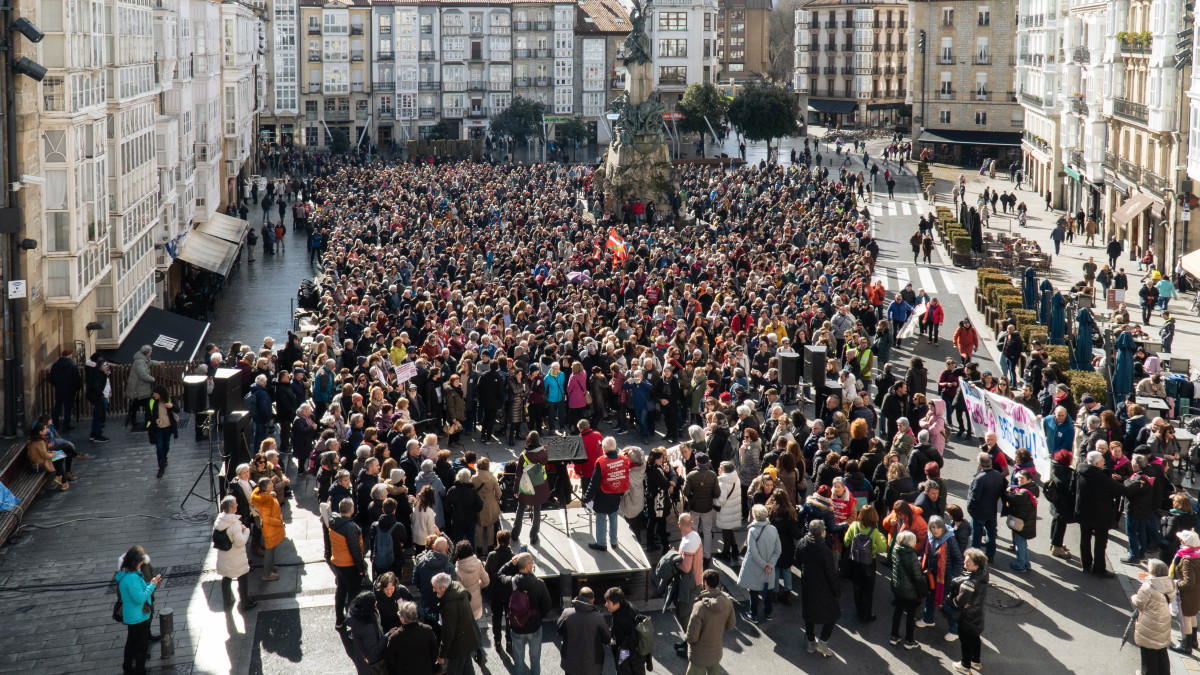
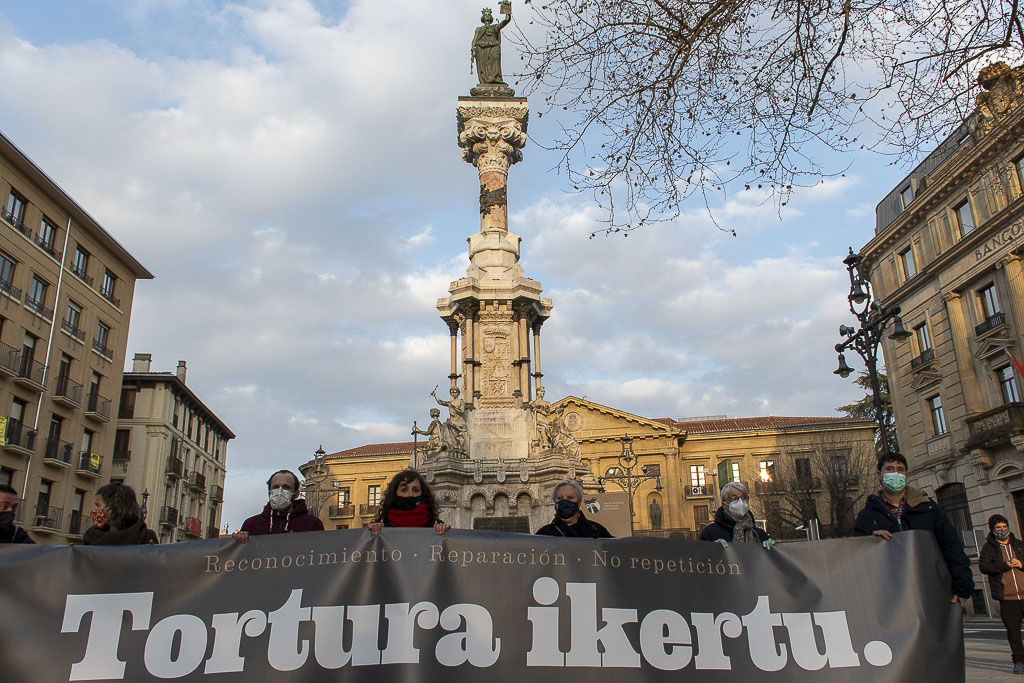

.jpg)
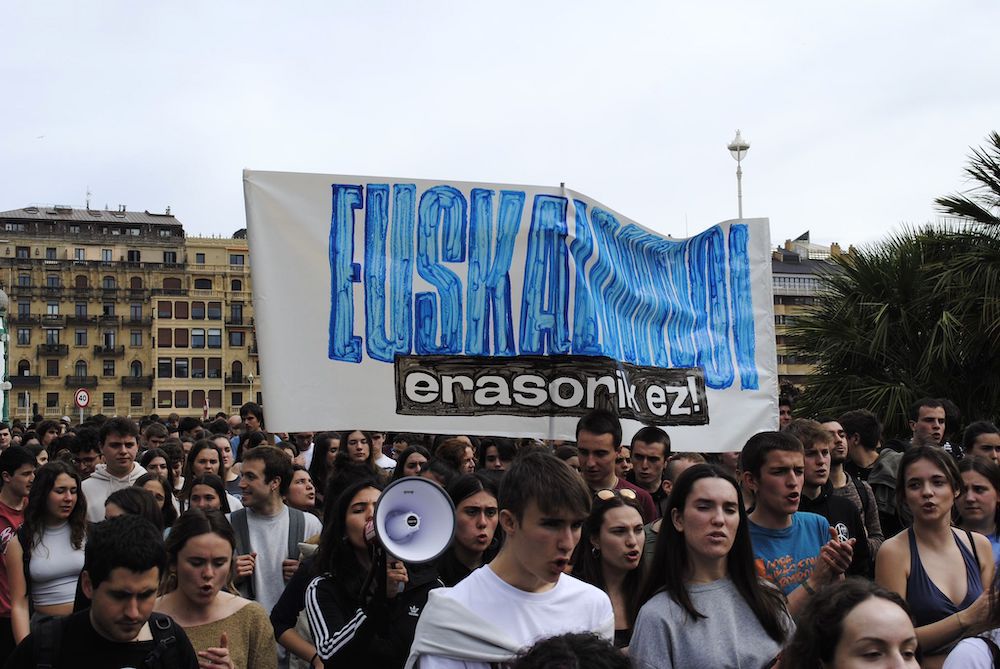
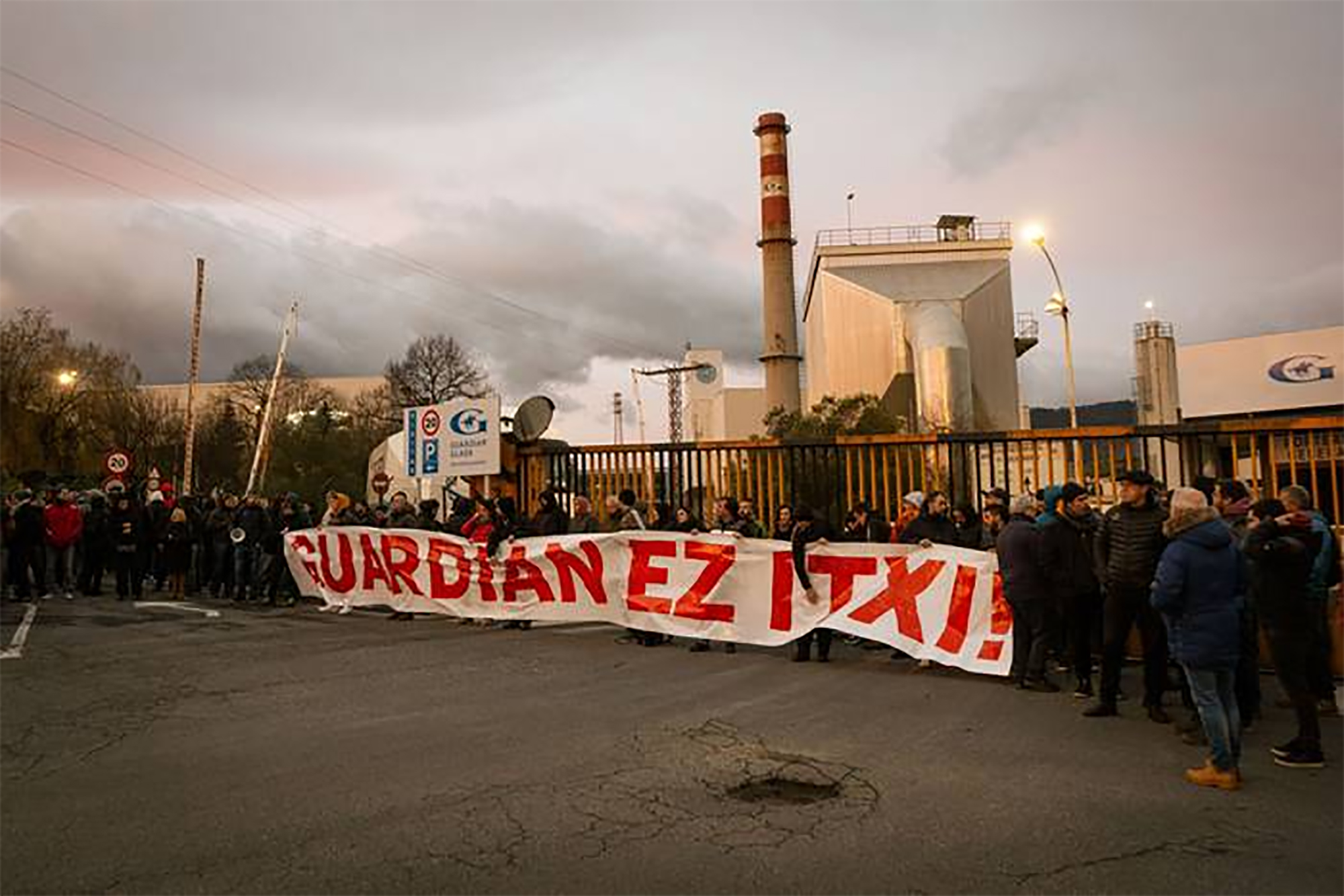




.png)

